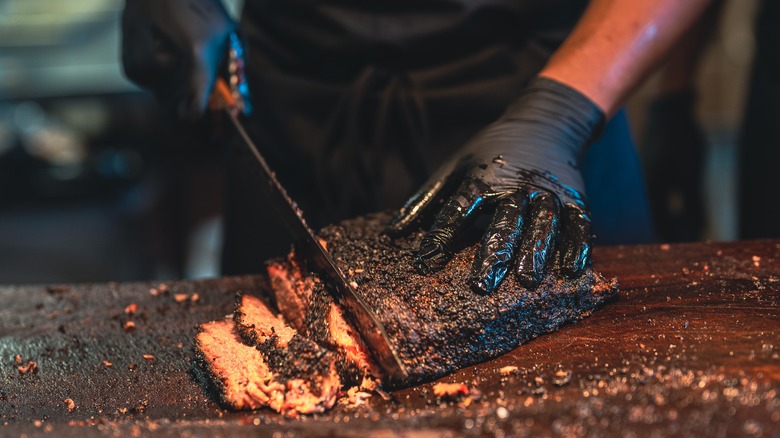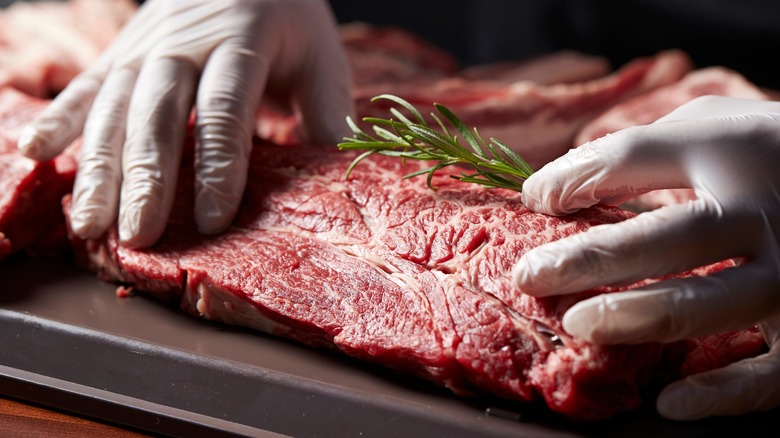The Science Behind Cooking Meat Low And Slow
You might know how to use a crock pot to make some of your best dishes, but do you know why some cuts of meat taste best when cooked low and slow? It may seem like magic, but in reality slow-cooked meat is a result of science at work. When certain cuts of meat like brisket, chuck, skirt, and shank are cooked at a low temperature for a long time, two specific processes occur: the Maillard reaction and collagen denaturation.
First reported by French scientist Louis Camille Maillard, the Maillard reaction is best known for creating flavor and aroma. It occurs when amino acids and reducing sugars cause a chemical reaction that gives cooked meat a brown color and an enhanced flavor. The process begins at around 140 degrees Fahrenheit and becomes more evident as temperatures increase. Because slow cooking takes place between 225 and 250 degrees, the Maillard effect is gradual, though it can cause burning if you leave the meat for too long.
Meanwhile, collagen denaturation is the breakdown of collagen, a connective tissue, into gelatin, making meat more tender and flavorful. Heating temperature and time are directly related to collagen breakdown, with a longer cook at a lower temperature providing the most tender results. With tough cuts of meat, fast cooking at high temperatures produces a chewy result because the fibrous collagen doesn't have time to break down. This is why you should never cook quality cuts of brisket on a grill, as they simply won't have enough time to render, leaving you with a subpar slab of meat.
Why low and slow works best for some meats and not others
Low and slow cooking works best for tough meat, which comes from the parts of the animal that do all the heavy lifting, like the neck, shoulders, chest, and limbs. These cuts have more connective tissues, and therefore, will benefit from collagen denaturation. The fat content of a cut also matters, as fat helps insulate and protect the meat from drying out while providing additional flavor as it renders.
On the other hand, lean meats are not good candidates for low and slow cooking because they have less collagen and fat to protect them from overcooking. This means that lean meats cooked at a low temperature for a long time are more likely to dry out and become leathery.
However, there are two exceptions to this rule. The first is in crockpot cooking, where you can add liquid to moisten lean meat. That said, adding too much liquid is one of the common slow cooker mistakes to avoid, and the key is adding just enough without submerging and oversaturating your meat.
The second exception is for large tender cuts of meat, like whole ribeyes, which don't have many connective tissues. Because these cuts are so big, cooking them over high heat will destroy the exterior while leaving the inside undercooked. Cuts like these should be prepared low and slow so they can cook thoroughly without the outside drying out completely.

